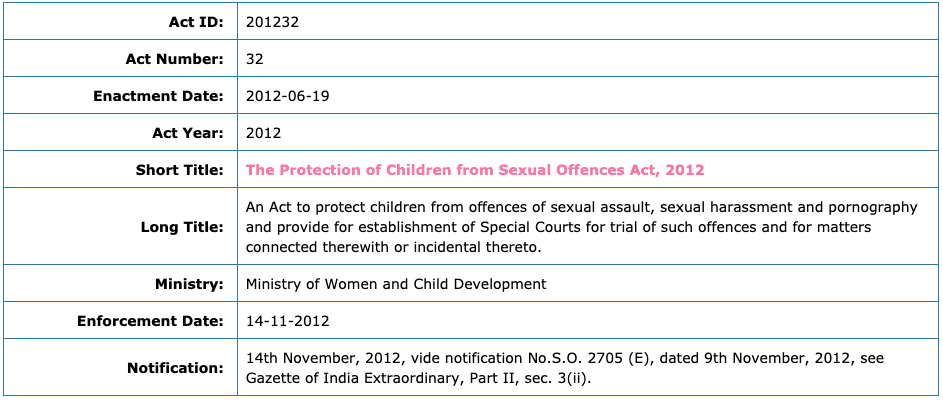POCSO (The Protection of Children from Sexual Offences Act, 2012) - Judgement Analysis
Last updated: 05 April, 2019 (See changelog).
2 Objective of the analysis
POCSO case-laws can be accessed from the District Courts portal - Ecourts. Mining these datasets, one can easily analyse the metadata related to a case such as hearing dates, judge, petitioner and police station details, etc. But important variables related to a victim and the accused are hidden in the judgement, which is a textual representation of a proceedings inside the court accompanied by the final order for the case. Reading multiple judgements, we found patterns where we were able to extract some of these variables and through this brief analysis, we aim to figure out what all is possible if we can extract hidden entities present in a judgement.
Current analysis is a WIP.
3 Scope of the analysis
Region: For the purpose of this pilot, we are doing a textual analysis of some judgements from the Thane District of Maharashtra. Here are some numbers
Timeline: 2013 - 2019 (March)
Case Type: All cases (with and without judgement)
Total cases: 4,181
Total judgements: 1,326
4 When are POCSO cases registered and disposed
Below graphs show a yearly, monthly and a daily trend of POCSO cases as per tee registration dates and the data of decision.
4.1 Yearly Case Distribution
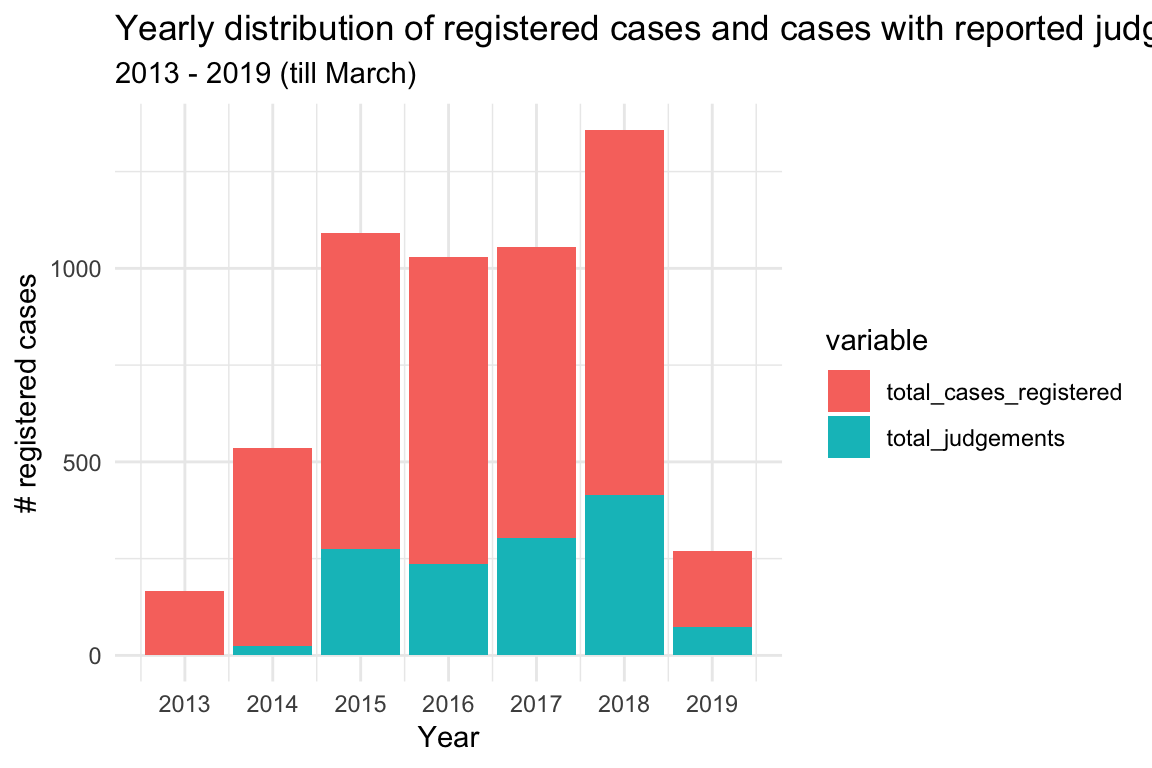
4.2 Monthly Case Distribution
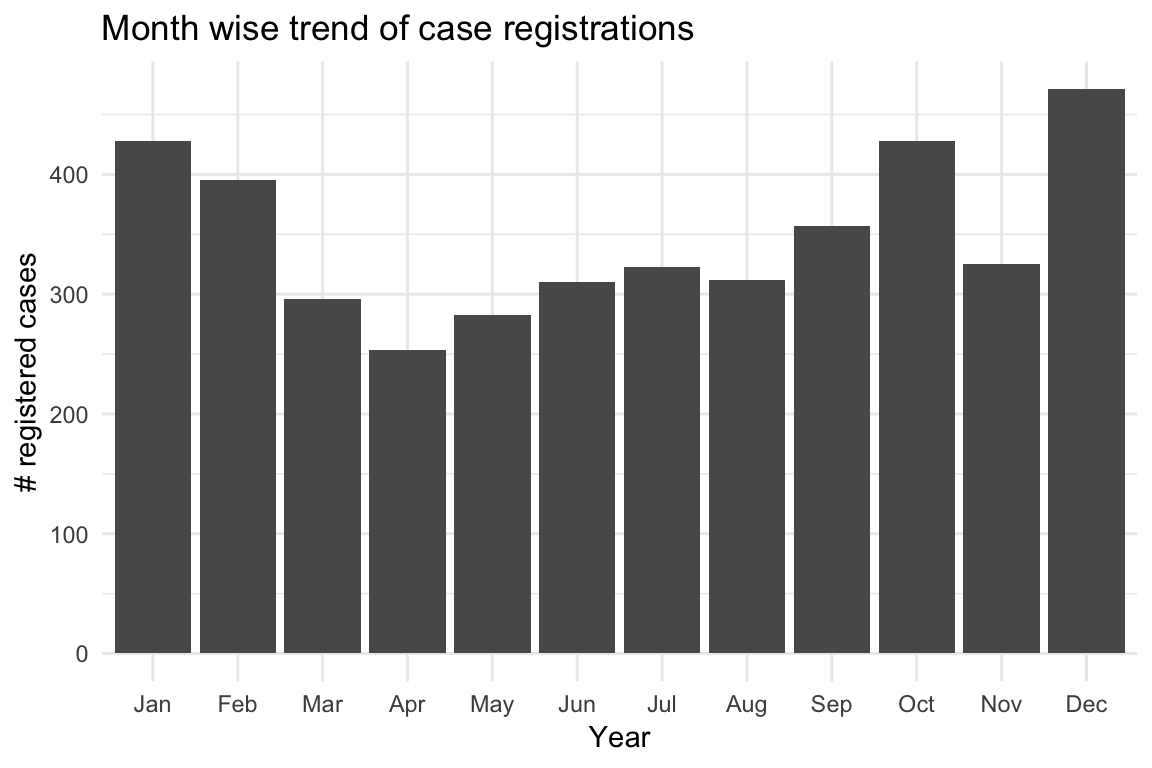
4.3 Daily distribution of POCSO cases in 2018
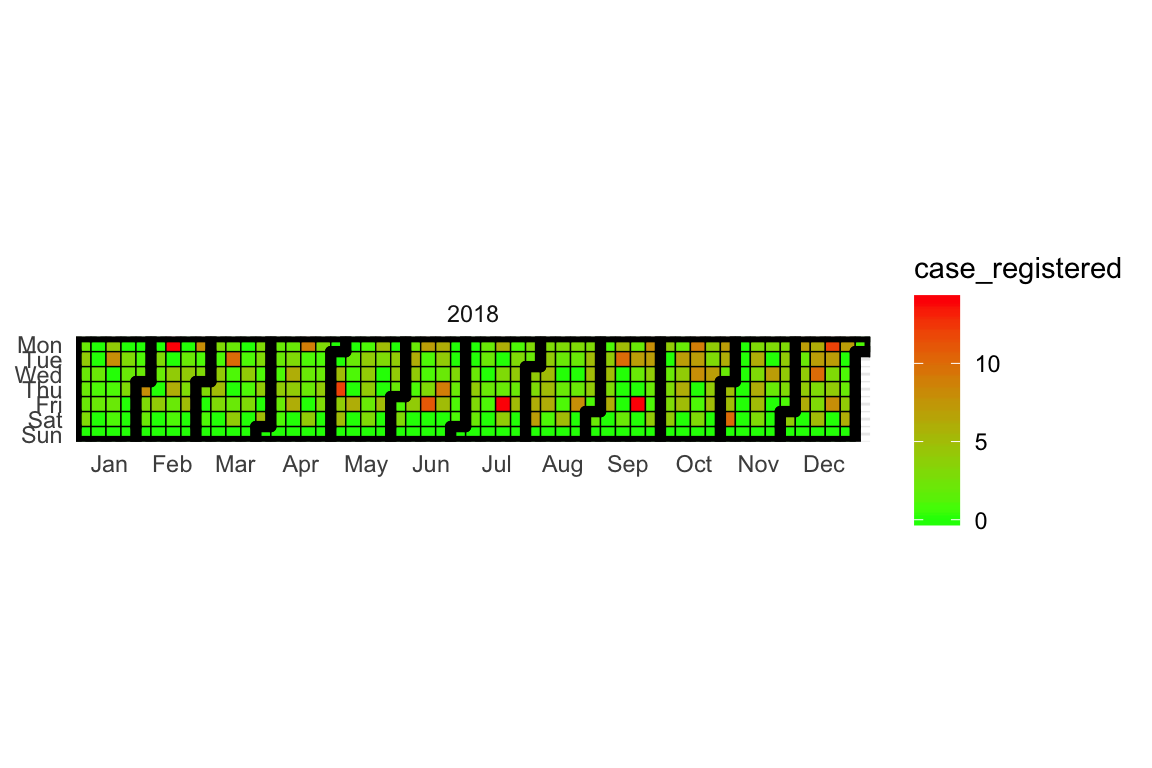
5 Analysis on convictions and acquittals in POCSO cases
The below analysis is done for reported judgements only. The above plots show that the year 2018 had the maximum number of judgements, but the most reported judgements were from the year 2015
Several reports around POCSO cases have shown a trend where the victim is often acquitted at the end of the trial. There have been very few convictions in these cases. Let’s see if a similar trend is observed when we analysed the final orders passed in these judgements
Analyse age of the victims - This is an important variable given the context of this act and it is not available directly as a variable from the metadata through Ecourts.
We will also try to see if there are yearly patterns in convctions and if age of the victim is somehow correlated with the acquittal of the accussed
5.1 Yearly convictions
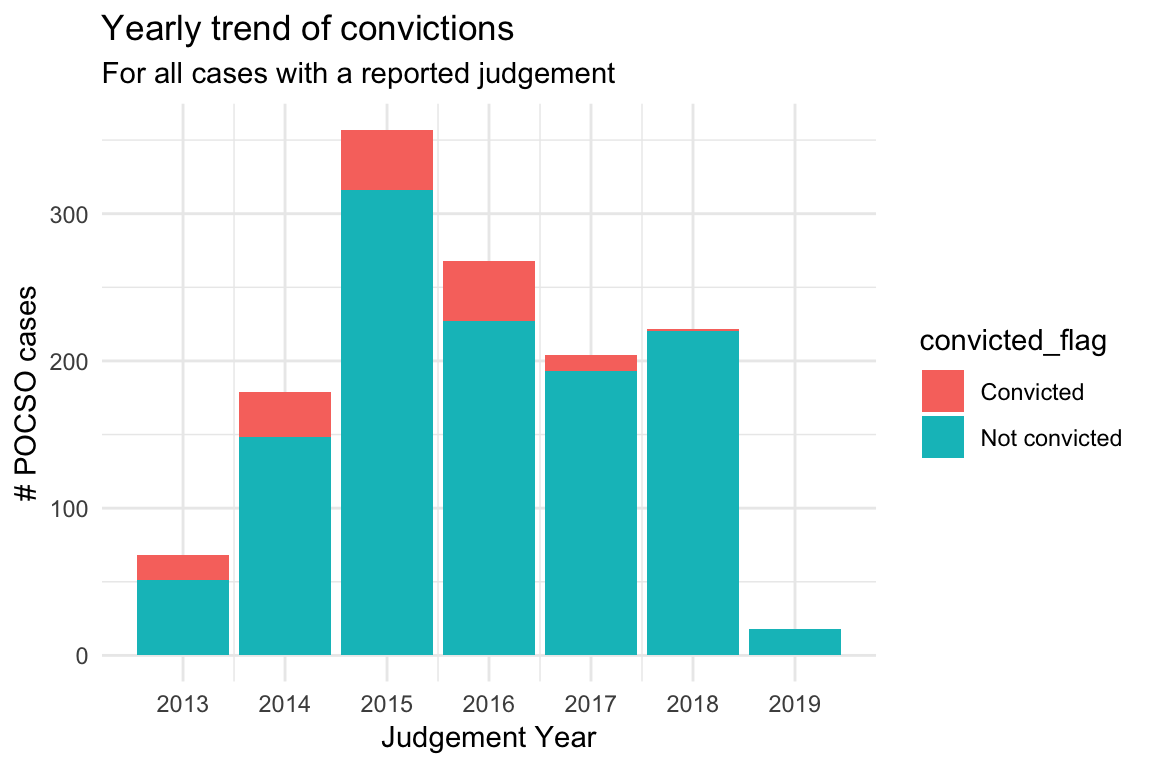
5.2 Yearly trends of POCSO judgements as per victim’s age
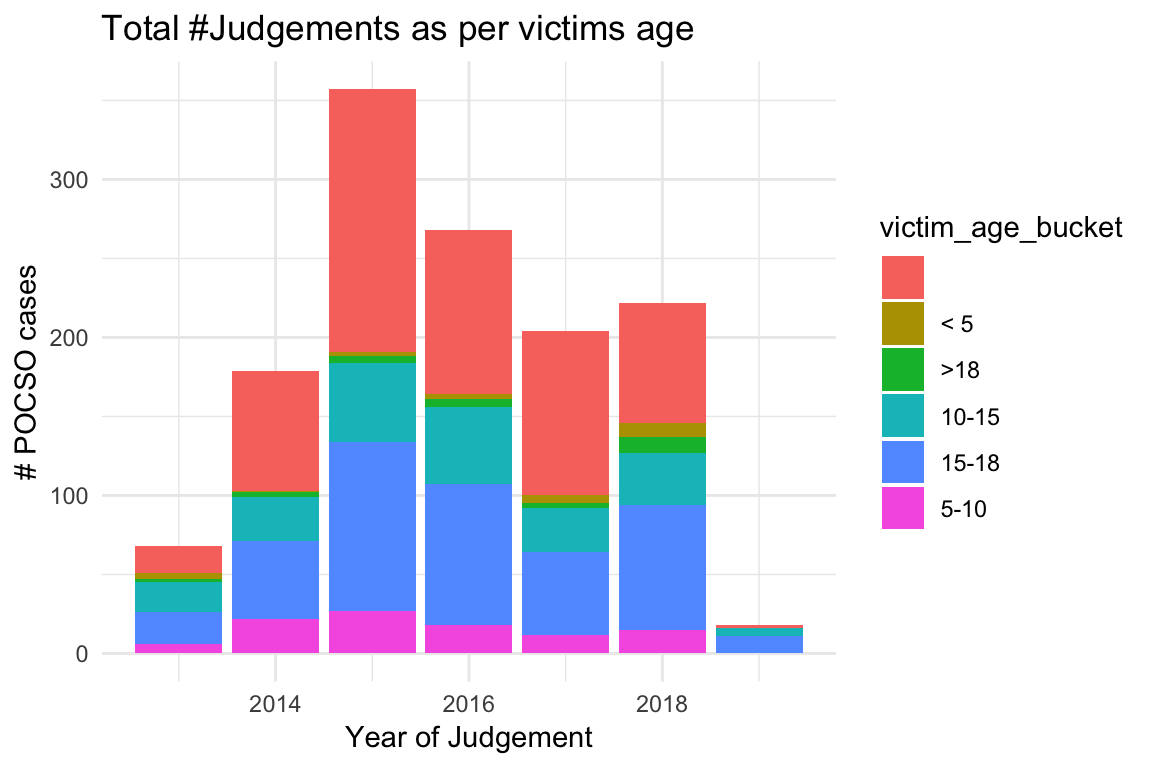
5.3 Accussed convicted vs Age of the Victim
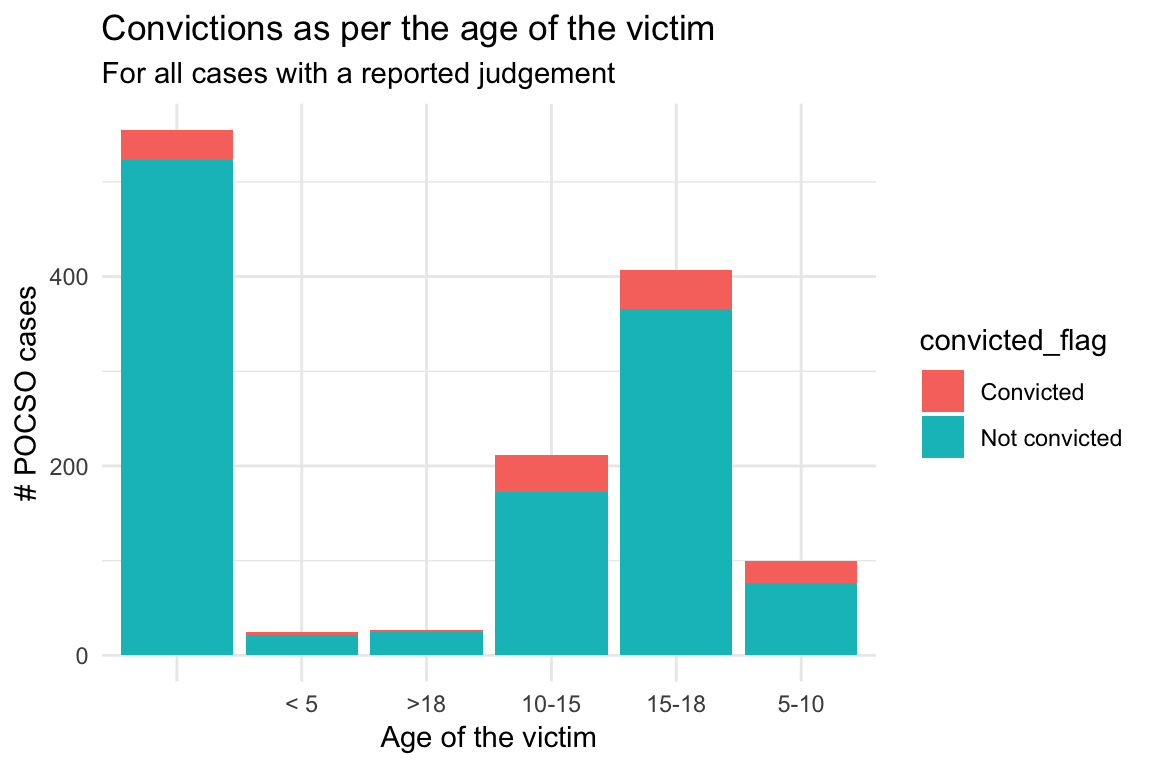
6 Textual analysis on orders passed in Judgements
Analysing the final orders passed in the judgements. We obsereved some patterns:
- Bail orders are a common occurence across judgements
- High frequency of the work convictions may tell us that either the person convicted has been booked for multiple acts and sections
- If the words acquitted and convicted are present in the same judgement, then there:
- can be multiple people involved in the incident out of which some are convicted and some are acquitted
- a single accussed is convicted under some acts and acquitted under other[s]
Let’s look at the wordclouds:
- For all orders
- For orders where the accused was convicted
6.1 For all orders
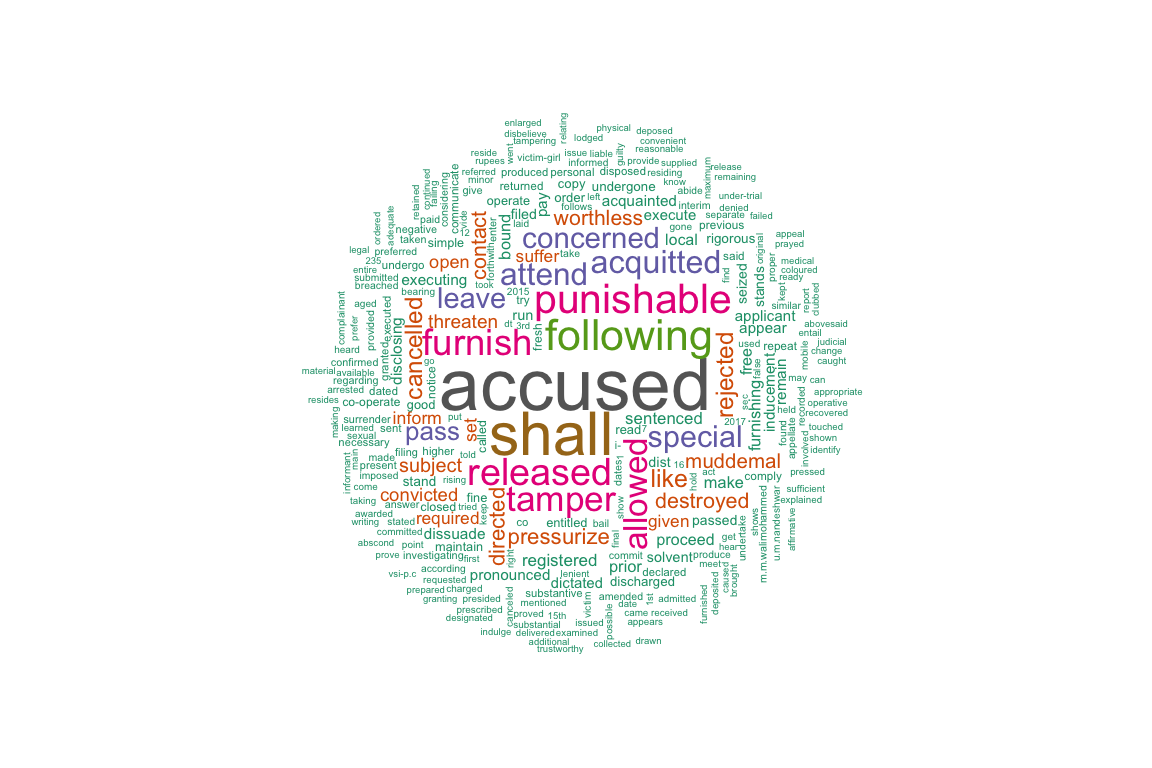
6.2 For all orders where the accussed was convicted
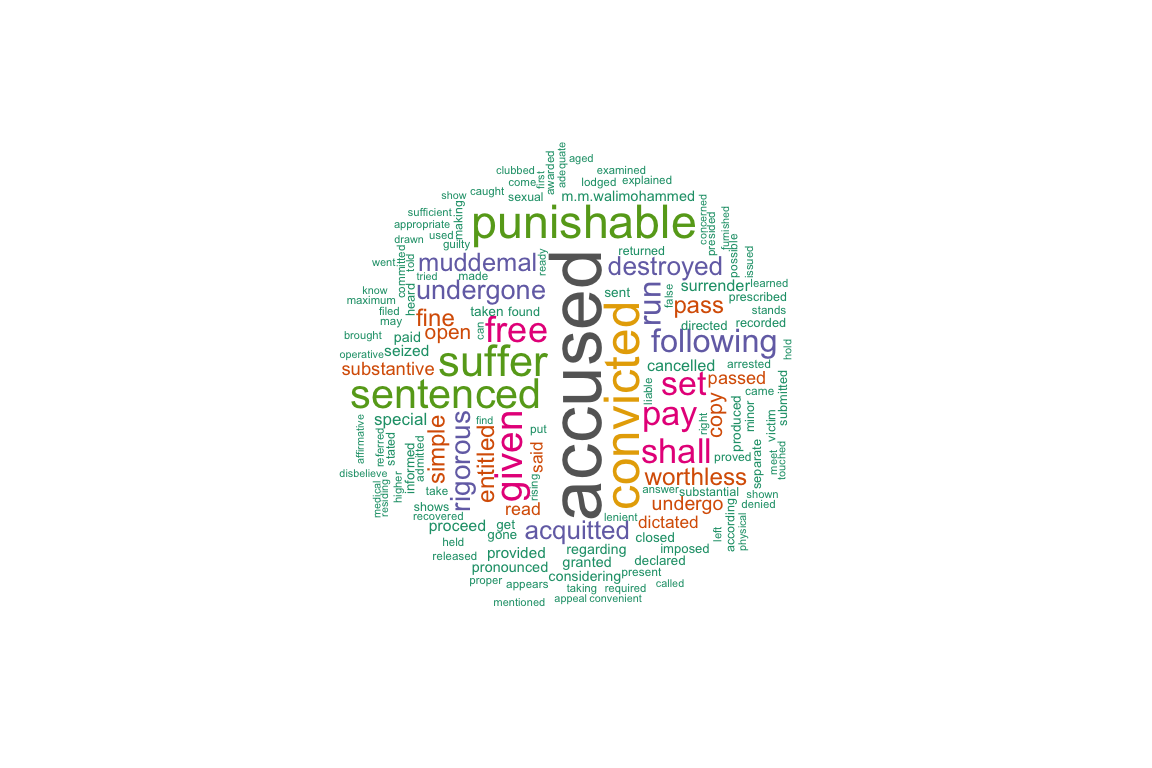
6.3 Frequency of words in an order of conviction
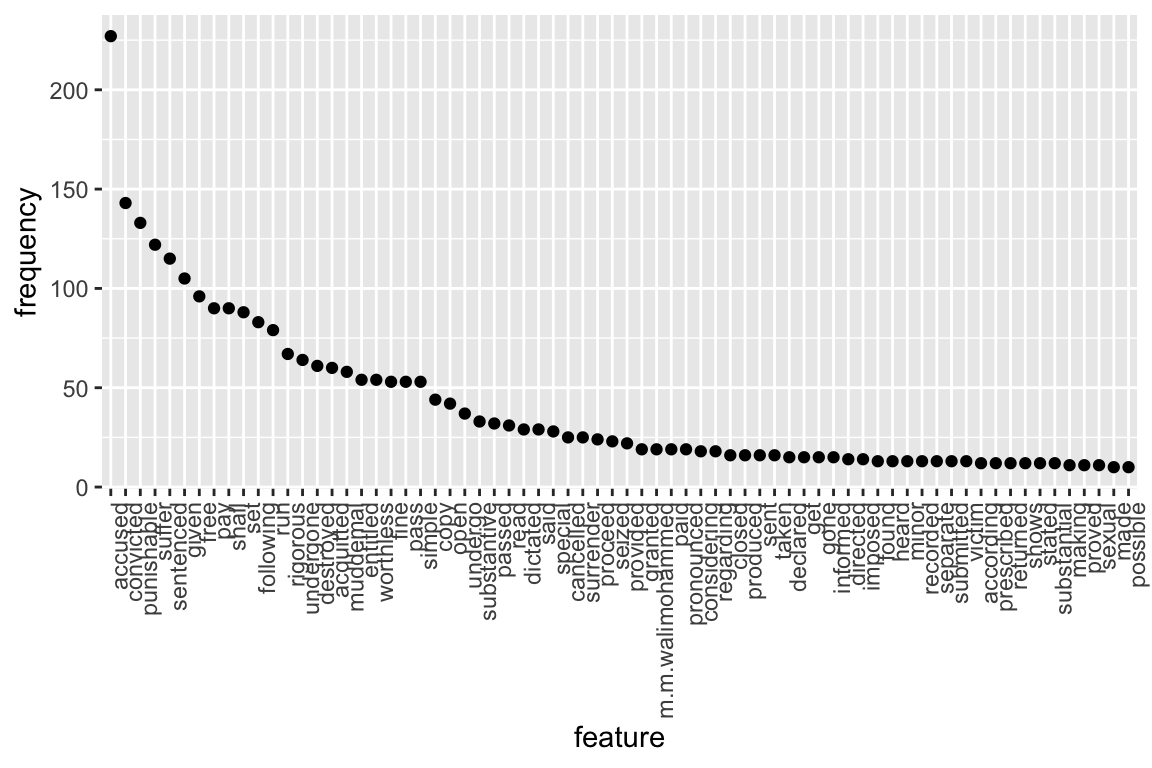
7 Search for keywords with context
A judgement is a treasure trove of information. In our analysis we found several important keywords which can be used to categorise judgement in several buckets and understand them better. This can help the policy makers to understand these cases efficiently and design policies accordingly to prevent the occurrance of this crime. To showcase the capabilities, we tried finding the occurrance of the word whatsapp in judgements to see where and how it was used. Please check the table below for the results.
The first coulmn displays the ID of the judgement

This work is licensed under a Creative Commons Attribution 4.0 International License.

